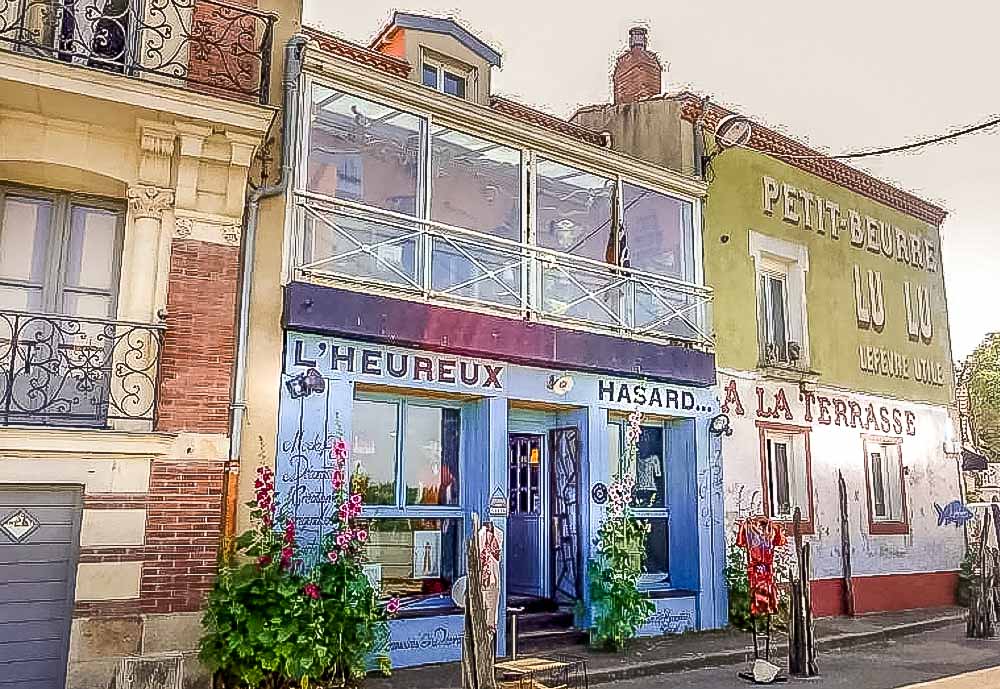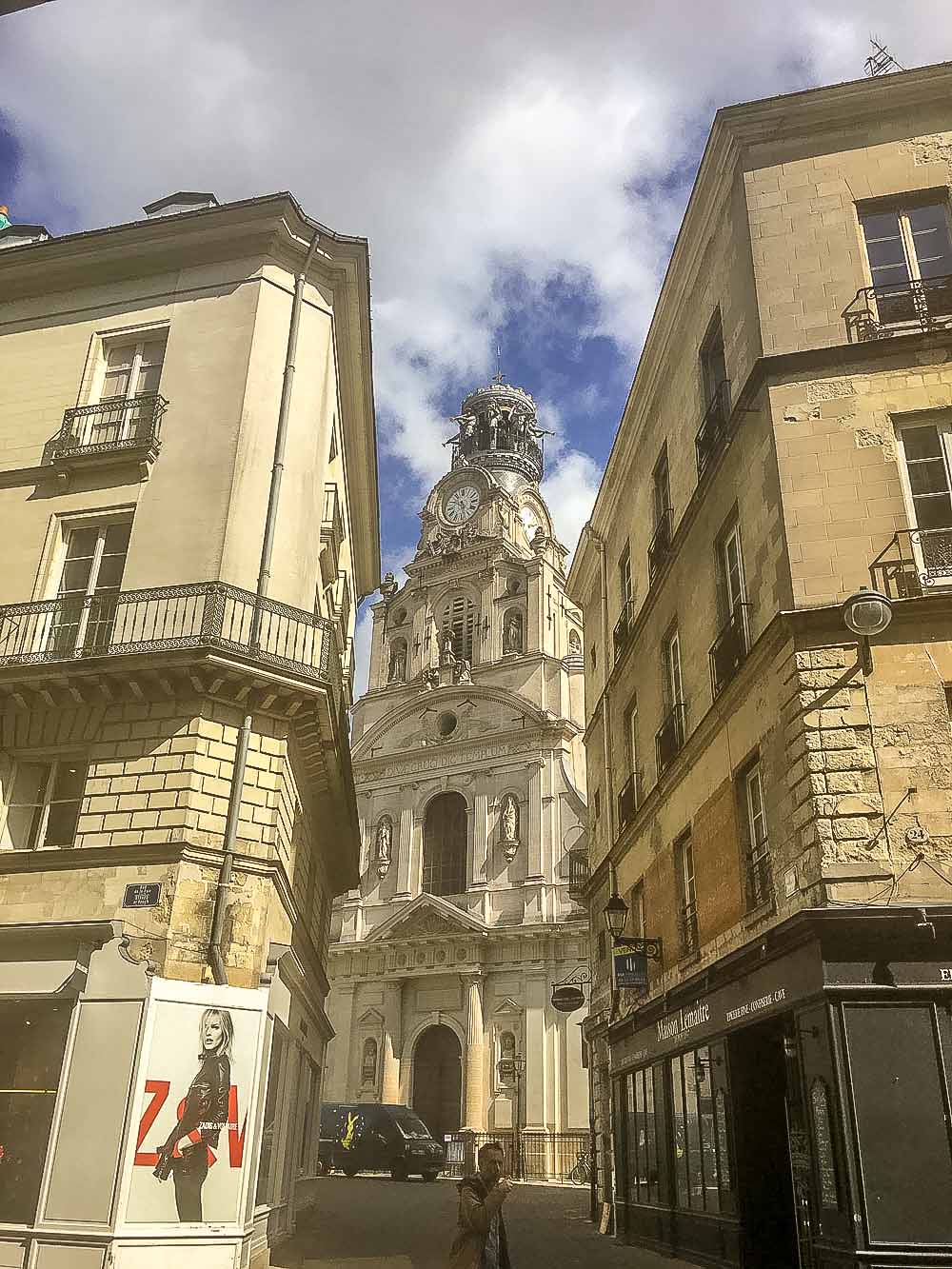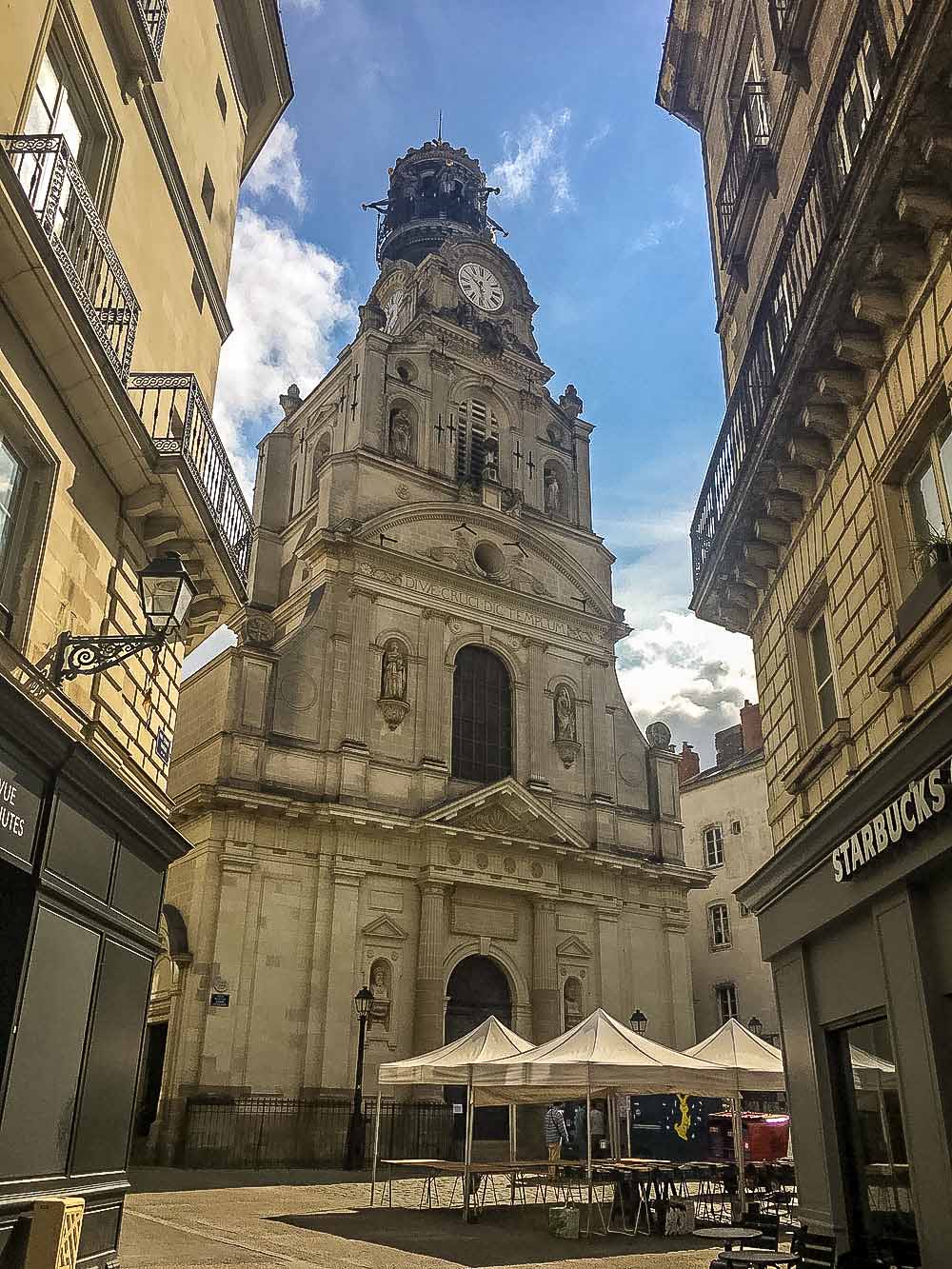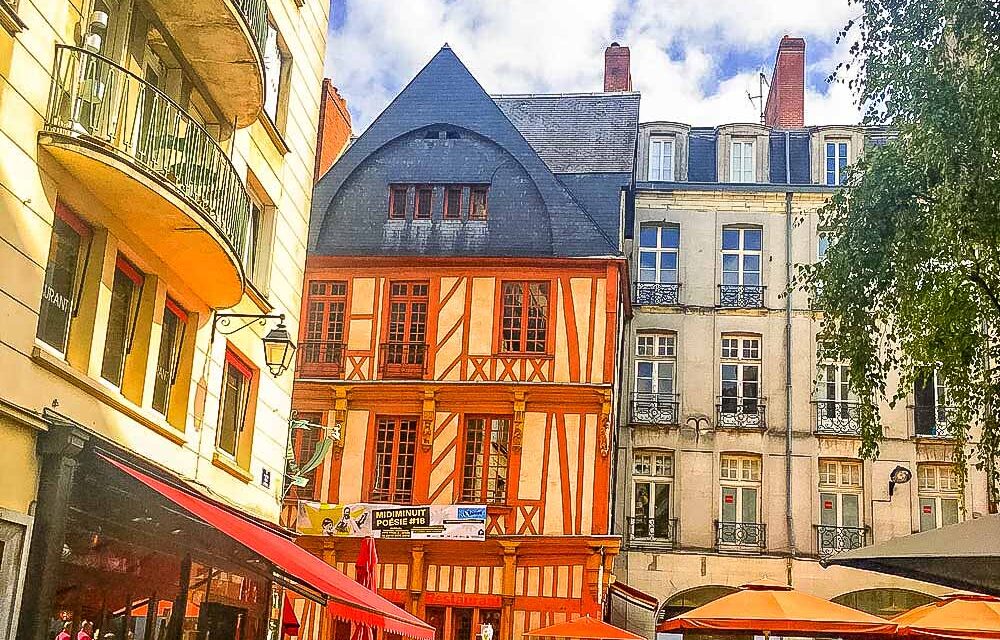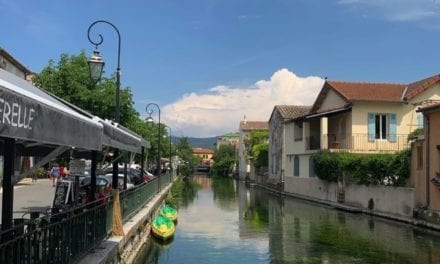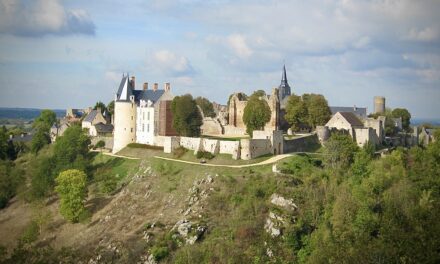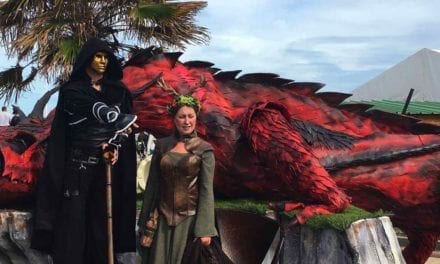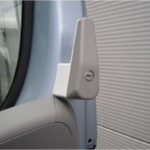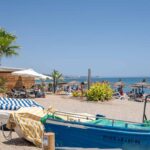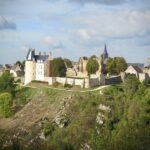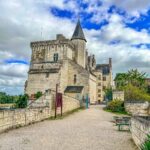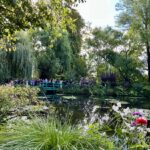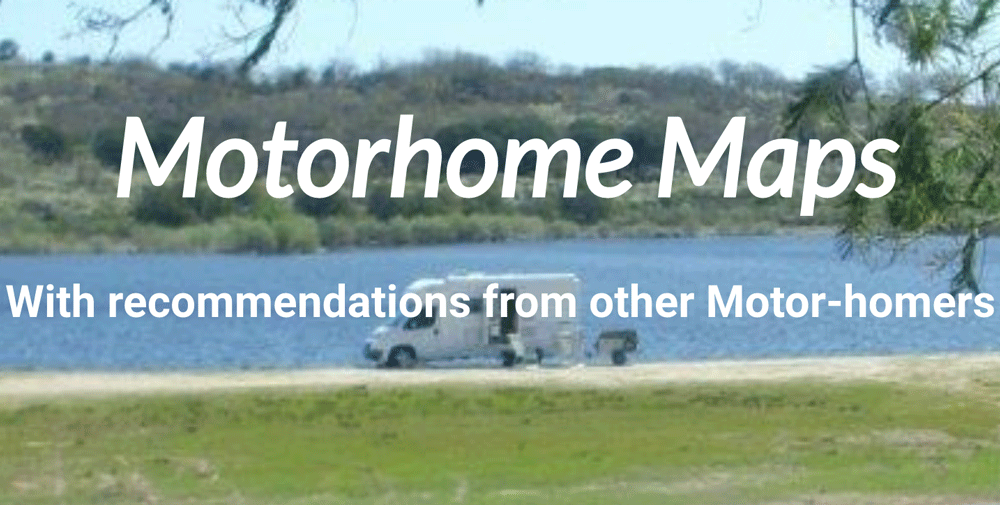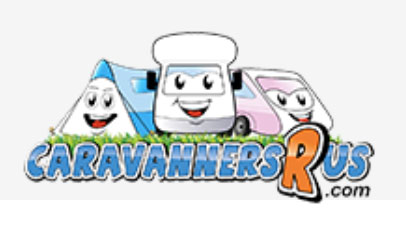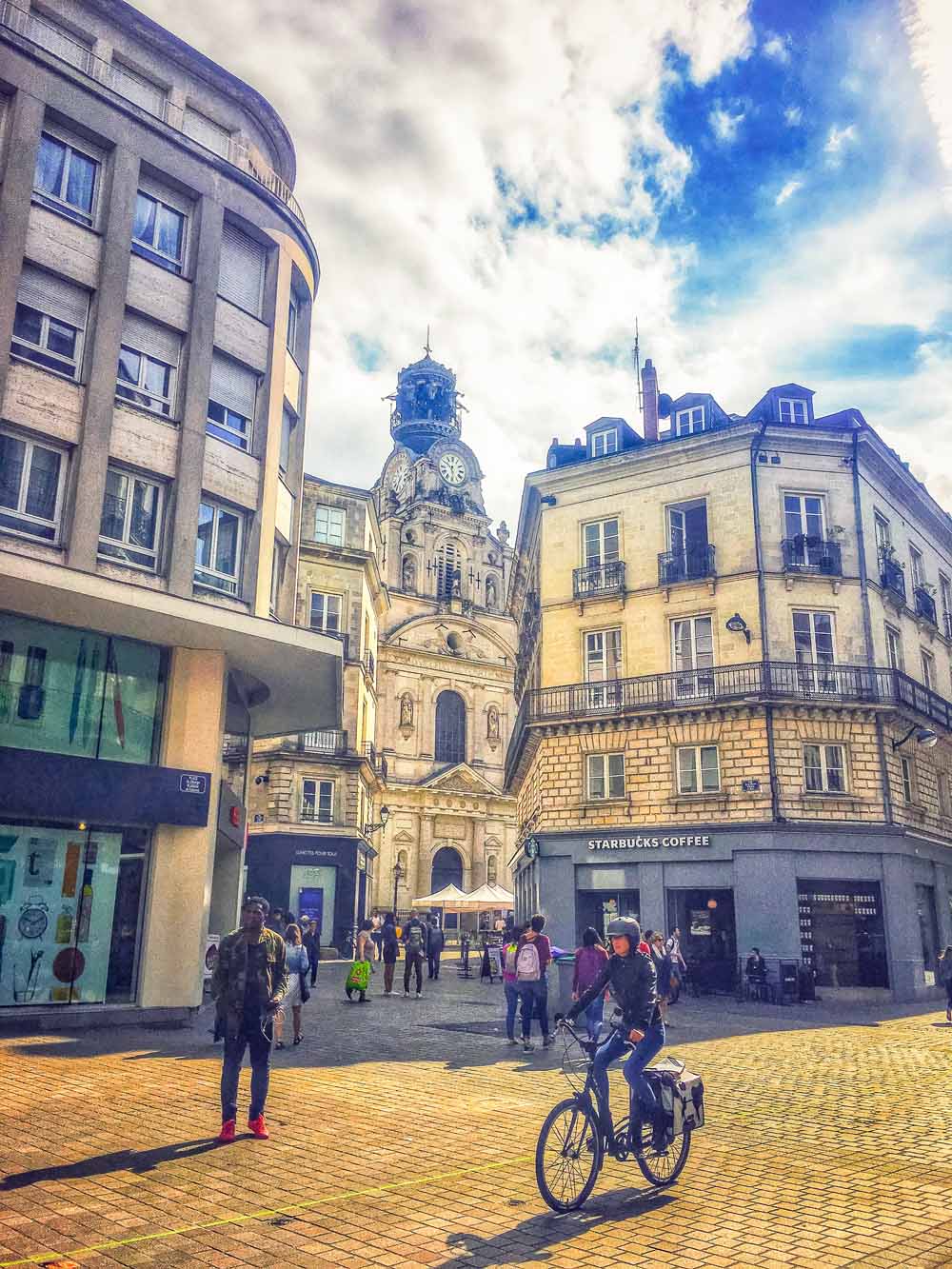
As it was a small city, we saw everything it had to offer in the two days we had allocated. This up-and-coming city has a lot to offer, including gardens, a beautiful cathedral, churches, creperies, a gorgeous chateau, museums, lovely architecture, and more.
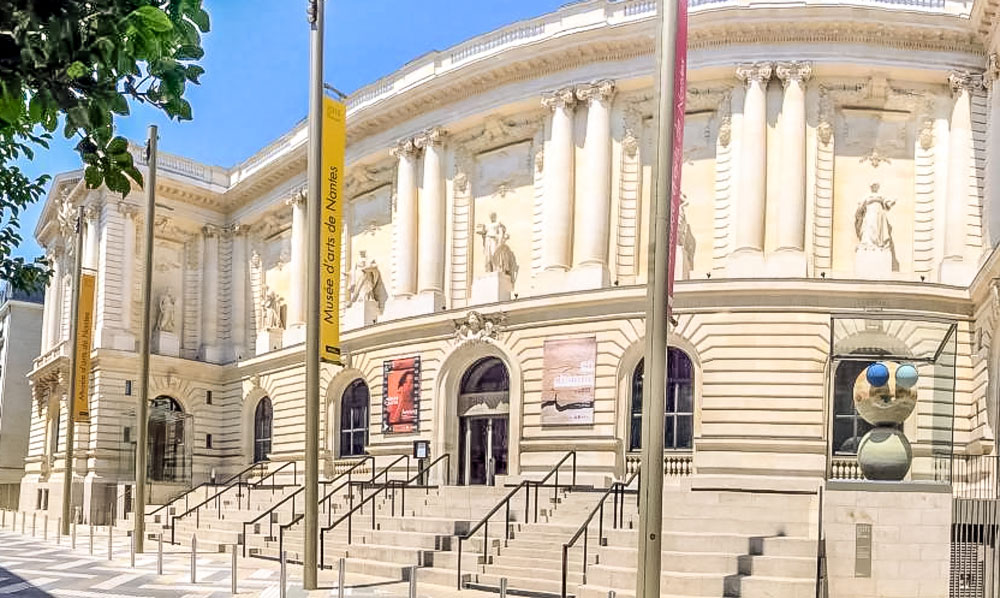
Table of Contents
Chateau Des Docs De Bretagne
(The Castle of the Dukes of Brittany)
Day one in Nantes began with a stroll through the Chateau Des Docs De Bretagne (The Castle of the Dukes of Brittany), which houses a history museum with interactive exhibits exploring the past and present of the area. The castle itself is very striking and beautiful. There are guides in different languages at the entrance, and in every room, there are information boards written in multiple languages.
Although there is a small lift to all the exhibition floors, there are many steps and narrow doorways.
Construction of the castle began in the 15th century, but it was completely restored in the 1990s. It is surrounded by a moat, where we spotted ducks & turtles and a lovely landscaped area that was being used by many visitors as a picnic area.
There is a fountain called the Mirror of Water in front of the castle, a strange football court, and a dragon model further on.
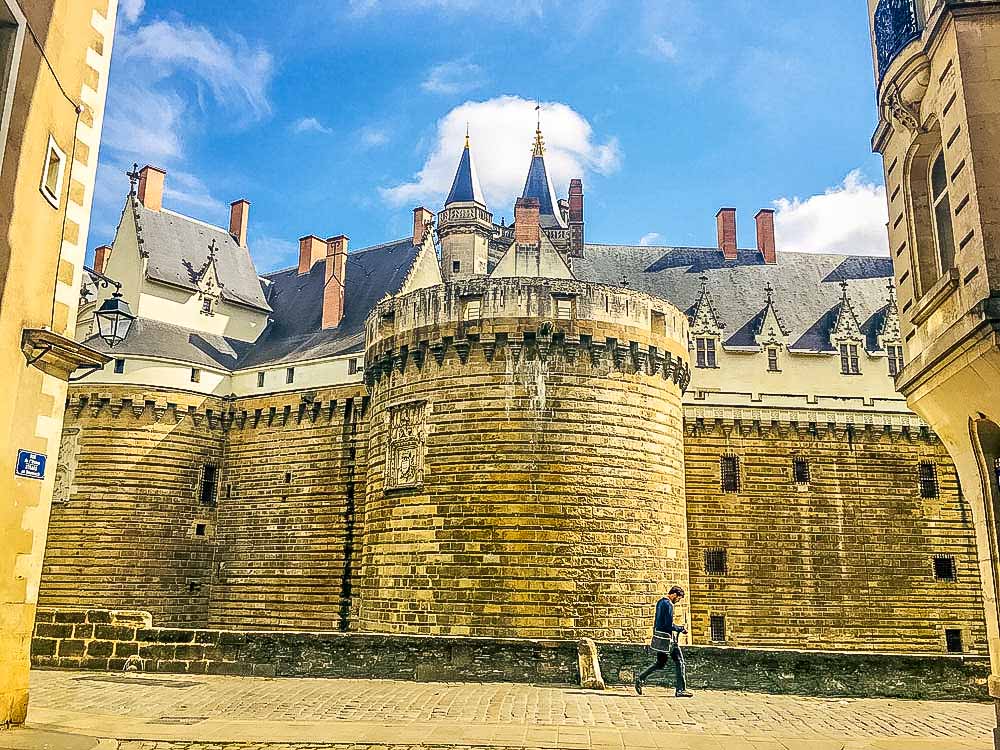
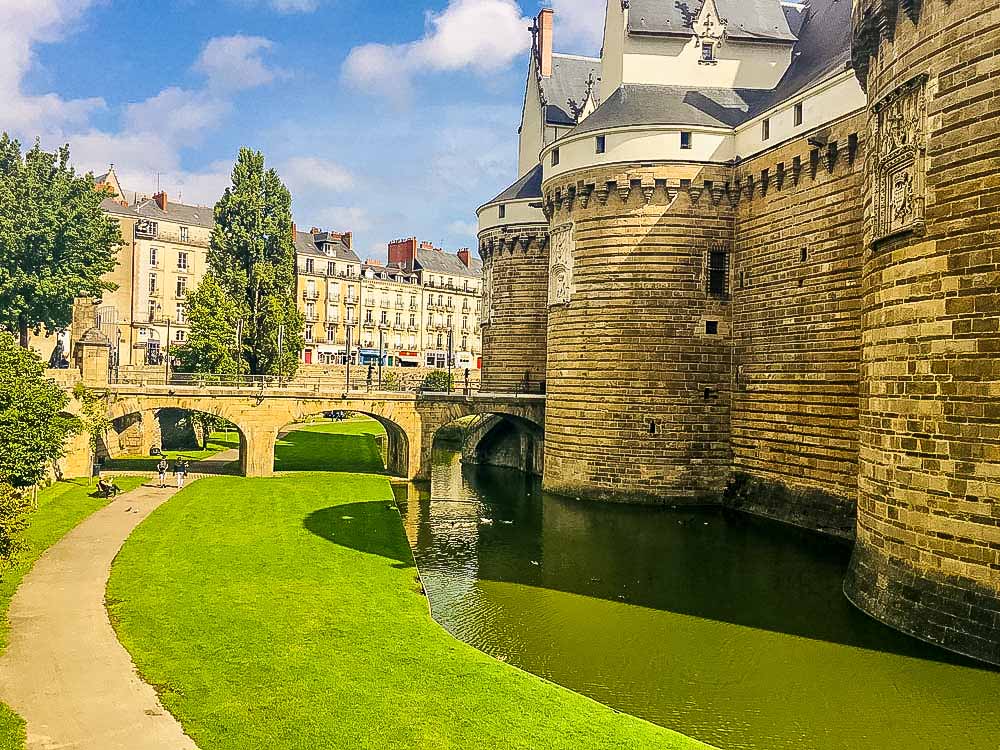
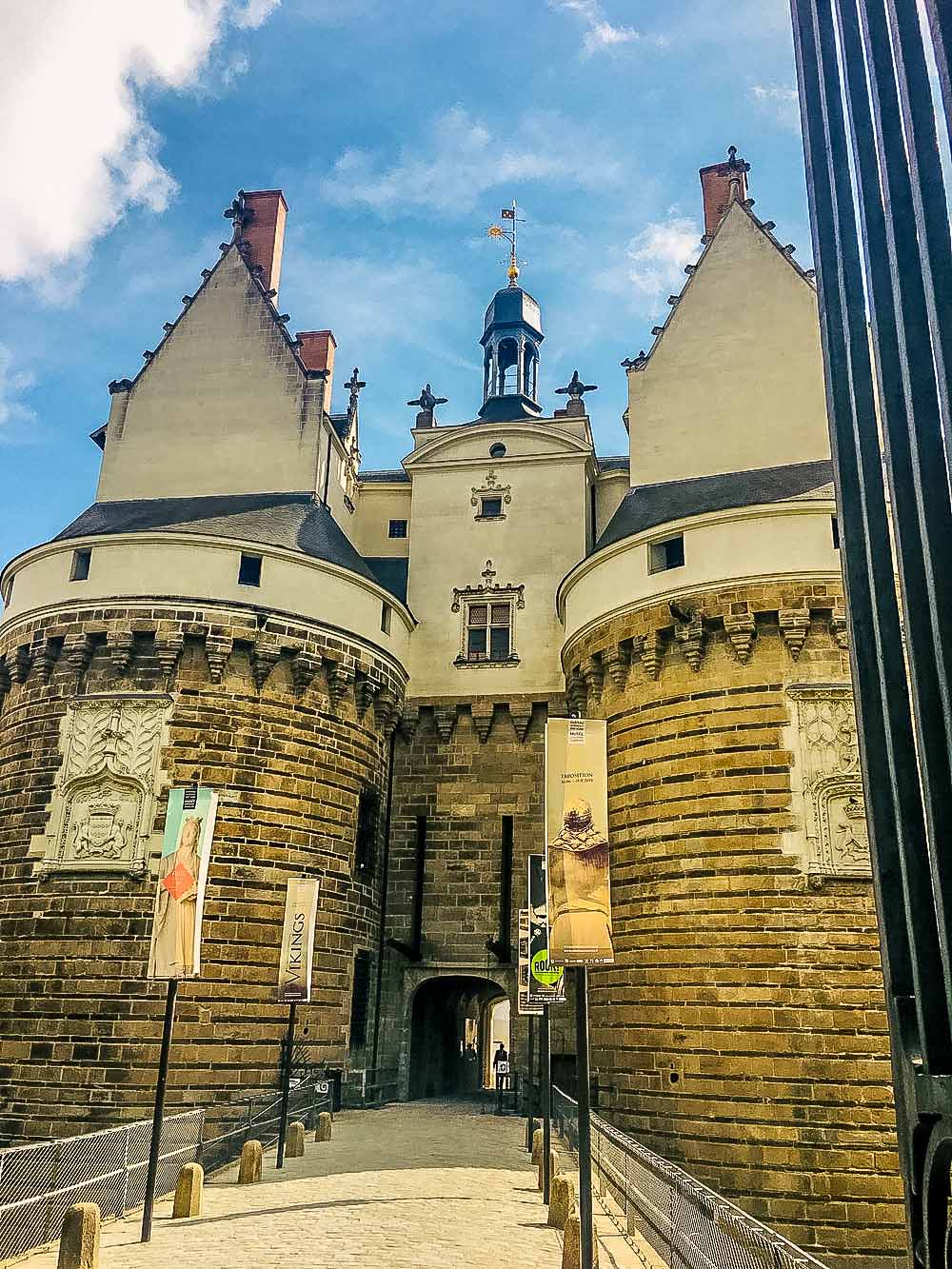
Your content goes here. Edit or remove this text inline or in the module Content settings. You can also style every aspect of this content in the module Design settings and even apply custom CSS to this text in the module Advanced settings.
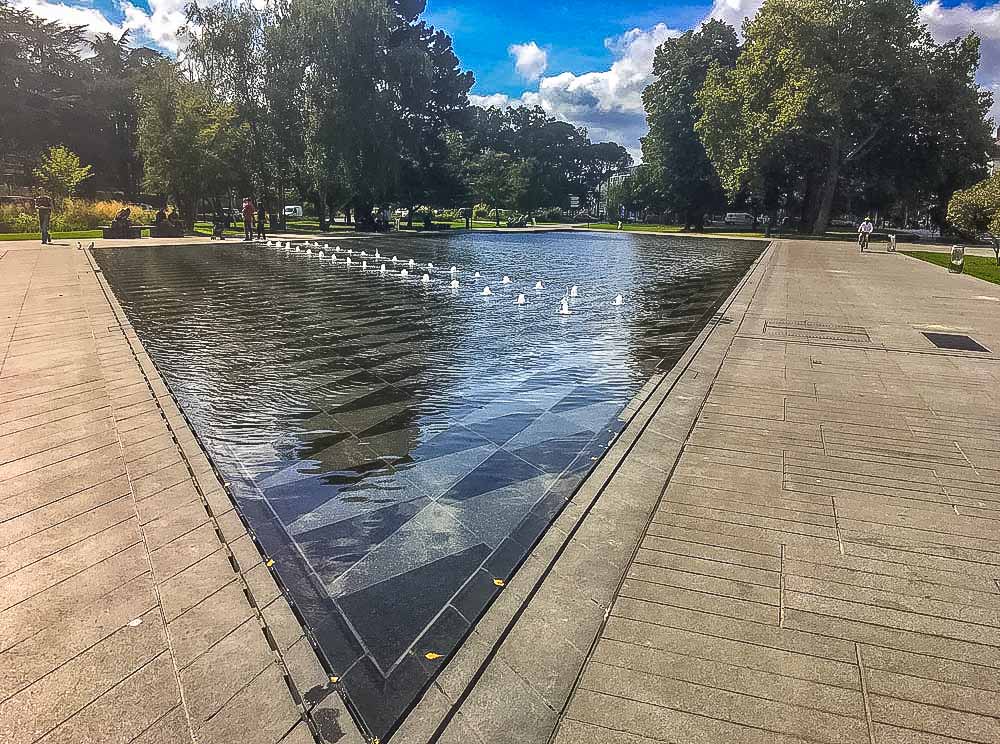
Lu Tower
A short distance from the Duc de Bretagne chateau is the Lu Tower. It’s a dome decorated in gold and blue. Now a music and arts centre, it was once the famous Nantes biscuit factory entrance. There is a small museum detailing the factory’s history, a good restaurant, a bar, and the famous terrace with deck chairs.
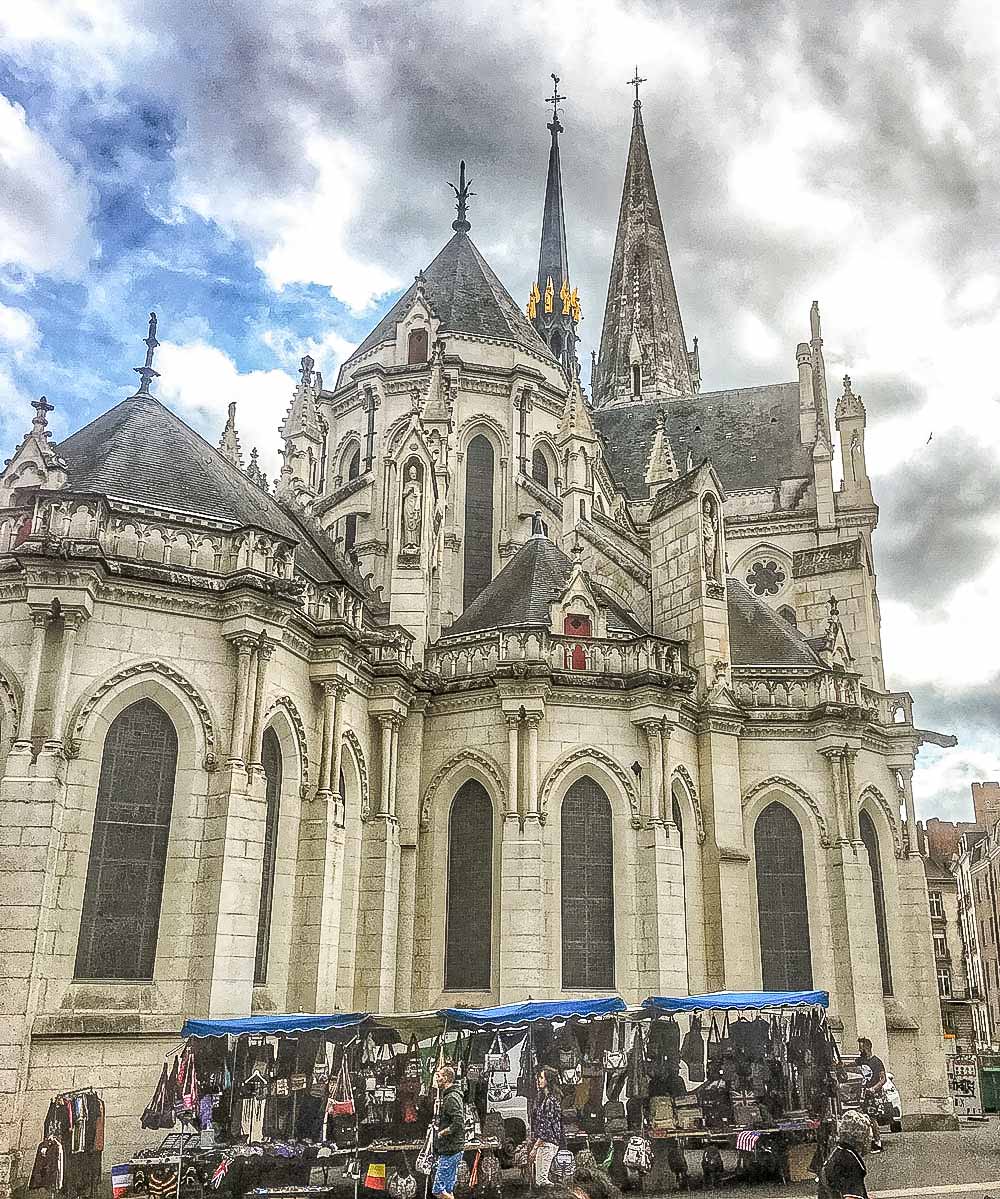
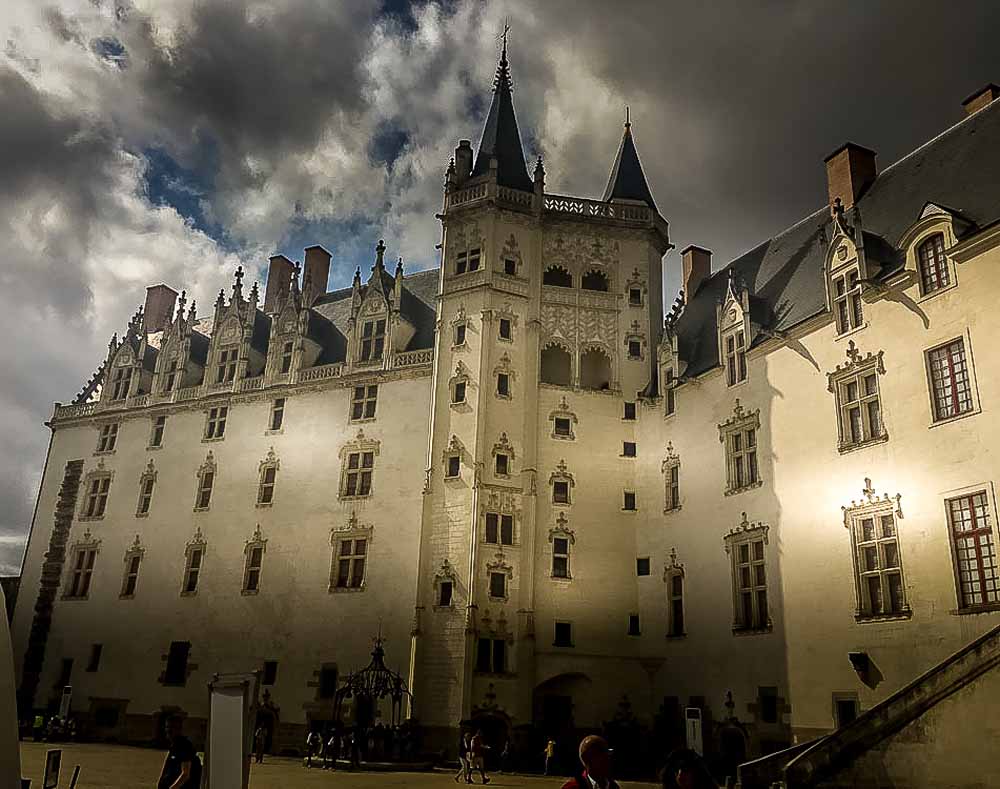
The Passage Pommeraye
The Passage Pommeraye was built in 1843 in the Graslin neighbourhood of Nantes and is an elegant covered shopping arcade. This is a stylish and beautiful place to shop or just sit and drink coffee. Stunning architecture can be seen throughout the building. An elaborate staircase, statues, and ornaments lead up three floors to a maze of gilded galleries.
In this area, we saw one of Nantes’ mythical restaurants – “La Cigale”. One of Nantes’ “must-see” places has an art deco décor and more than 120 years of history. This is a great place to get a classic French brasserie experience.
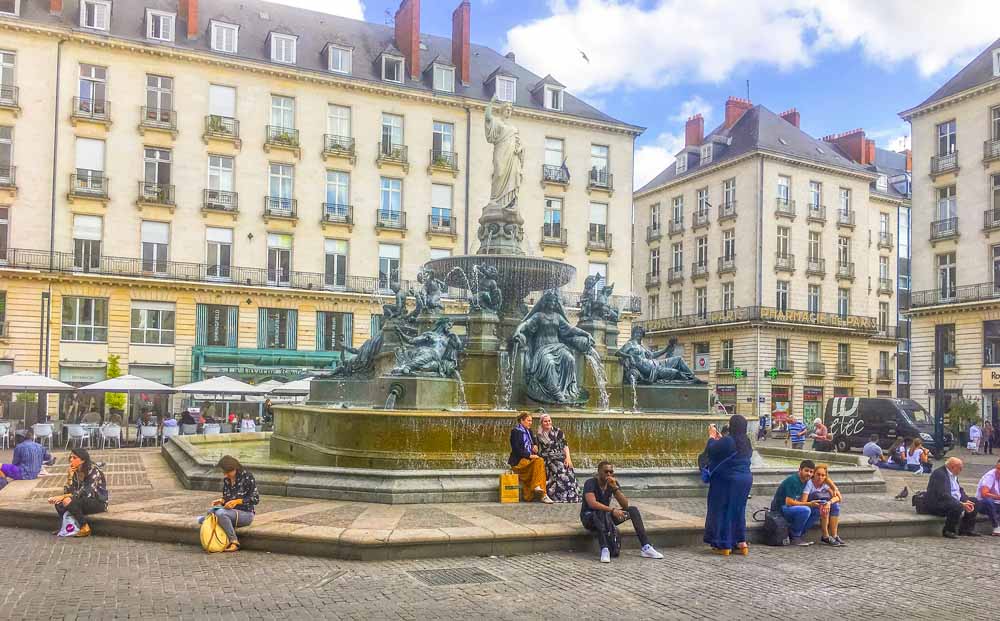
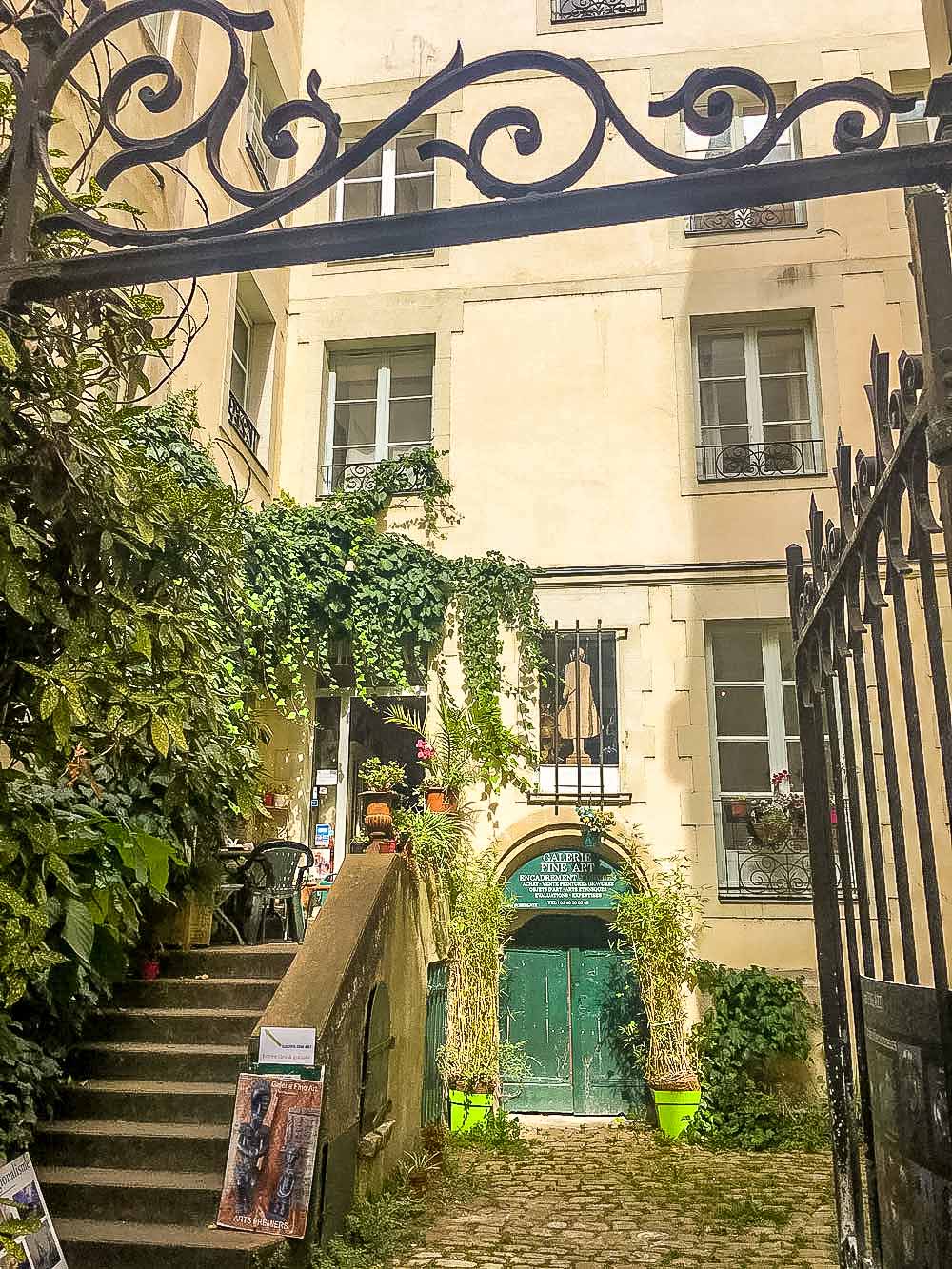
Les Machines d l’lle
Our second day was spent visiting the Machines of Nantes. The Old Shipyards have transformed into a wonderland for kids and adults. The island was initially used to construct boats and later as a business centre. It was created by Francois Delaroziere and Pierre Orefice as a cultural and artistic project. You can ride or drive a number of these articulated machines in the form of giant animals, which is a unique cultural attraction.
The Marine World’s Carousel and Le Grand Elephant are two highlights. We also spotted a giant ant running through the gallery during our walk.
The Grand elephant is a mechanical elephant which was built in 2007. It is an exact replica of the Sultan’s elephant from Royal Le Luxe which toured the world between 2005 and 2007. With a height of 40 feet/12mm and a weight of 48 tons, it regularly transports up to 49 people around the island for a 45-minute ride. It was a bit of a shock when I got close to take a photo because it sprays water at you every now and then from its trunk.
In the gallery, we saw natural plants and other mechanical animals you can ride or lead around, including a giant ant and a giant heron. If the timing is right, you may see a huge spider emerge from the ground.
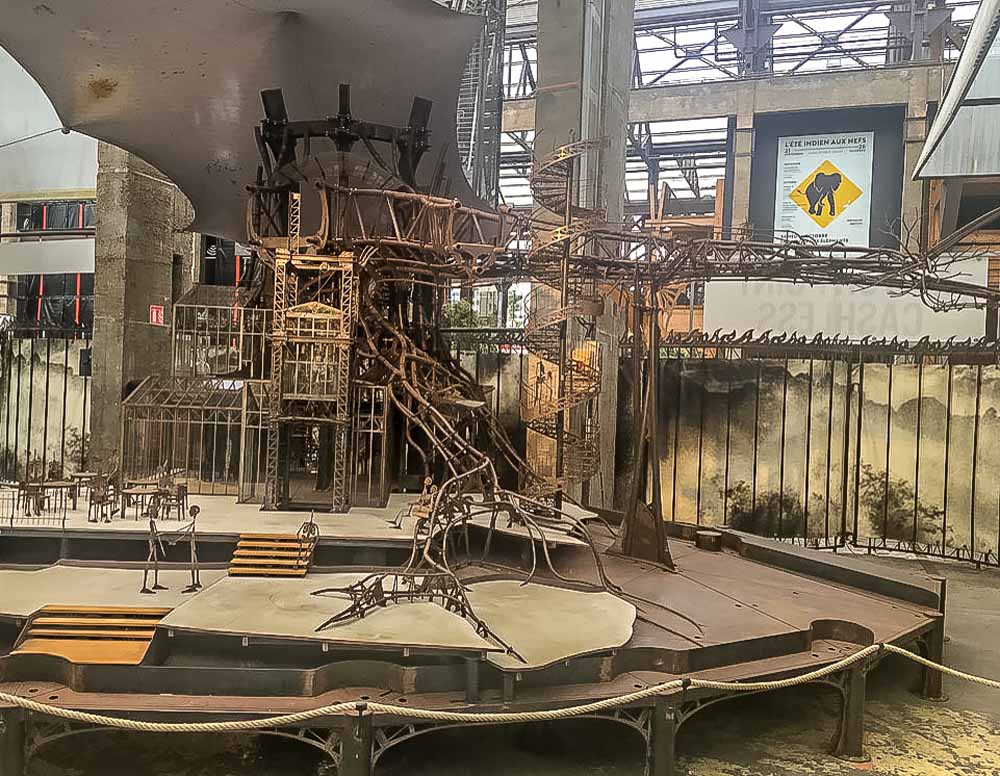
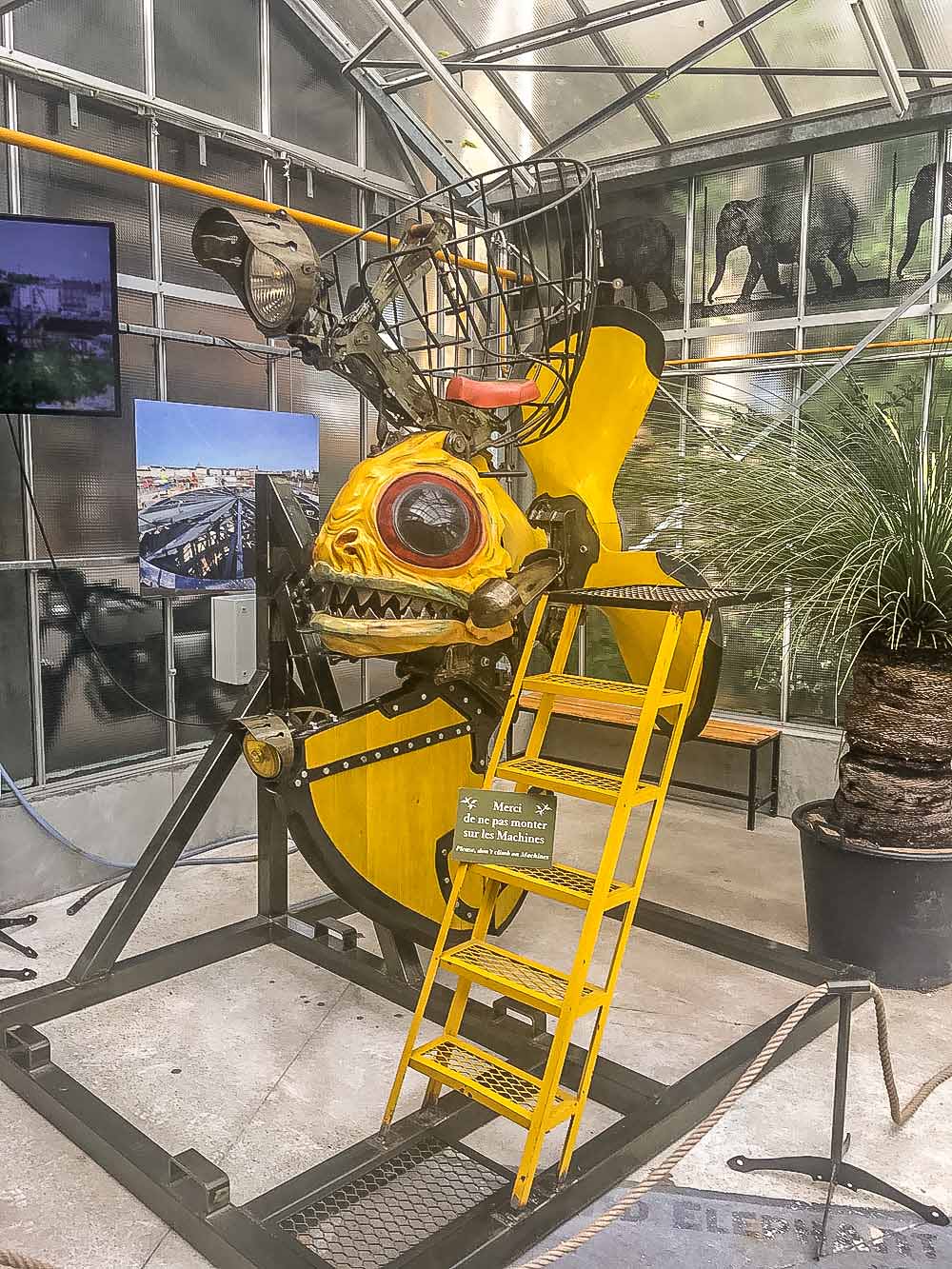
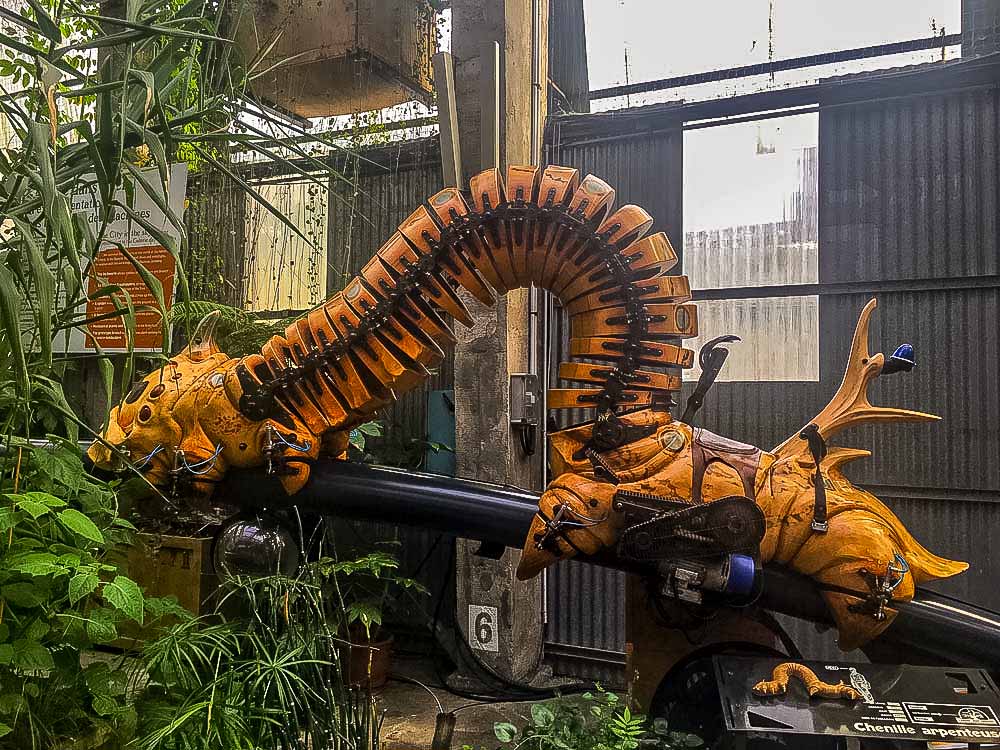
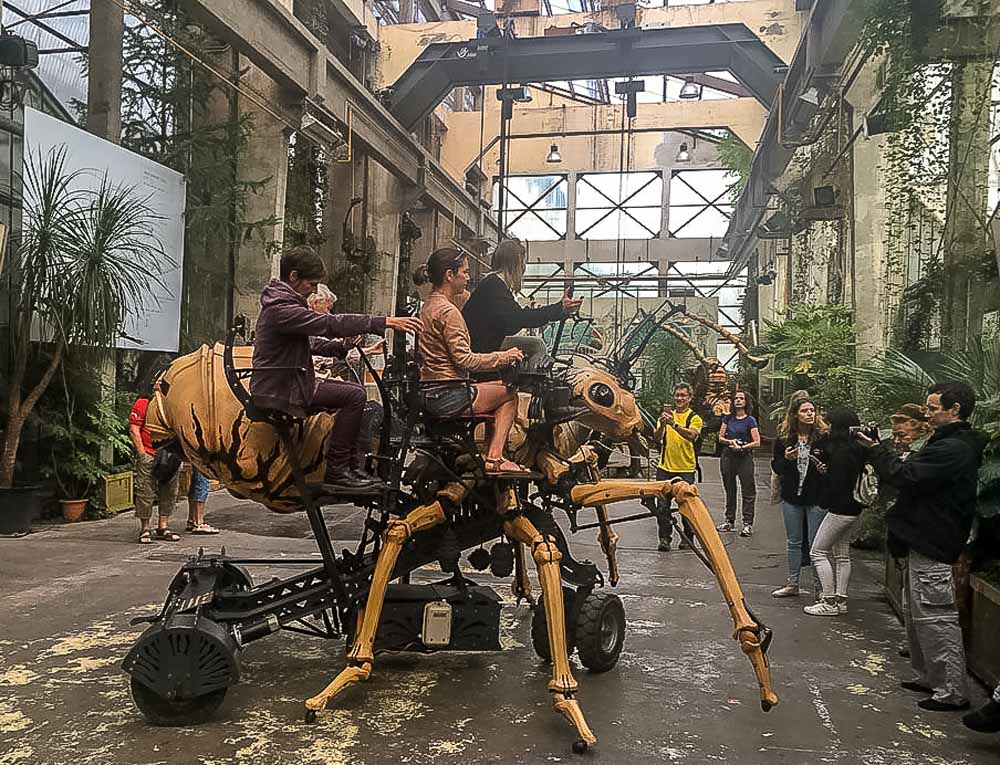
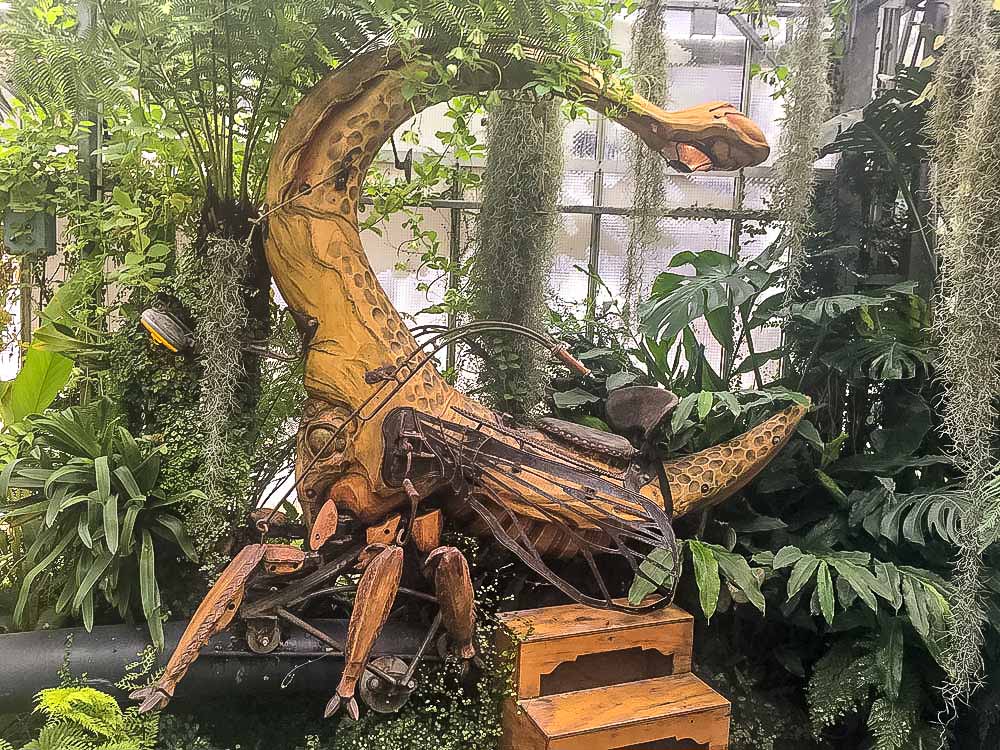
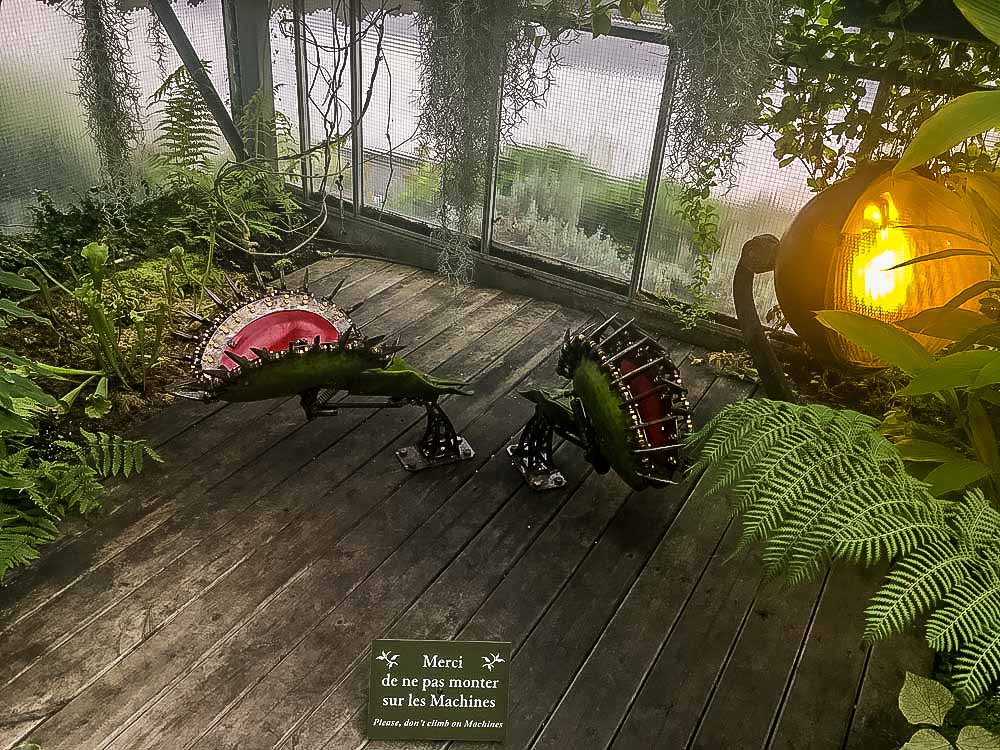
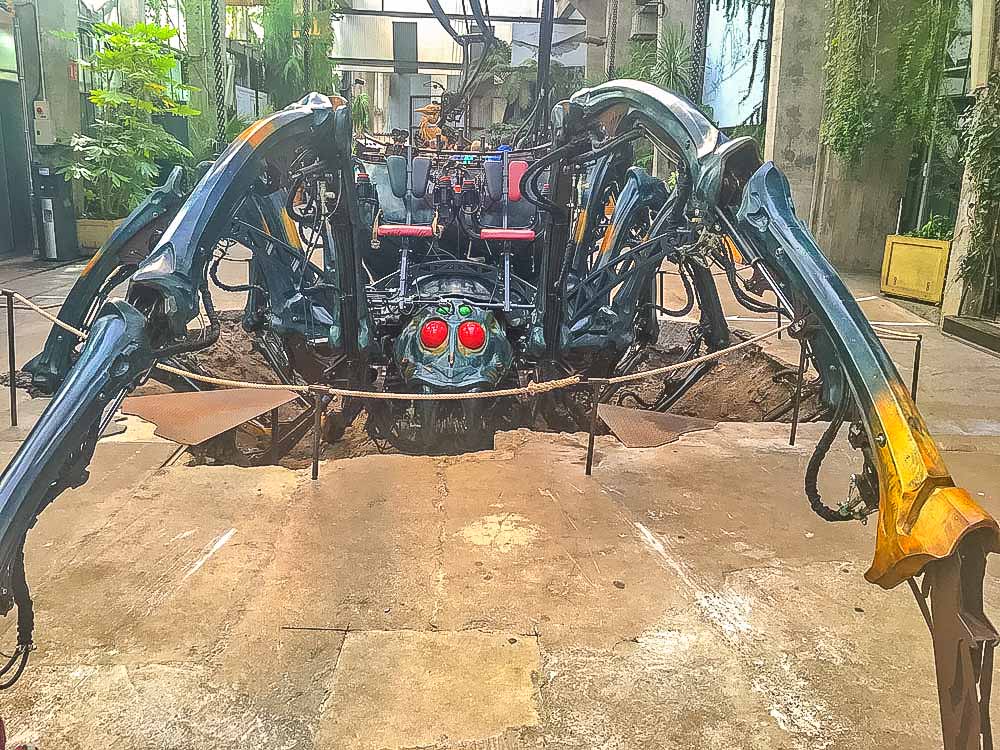
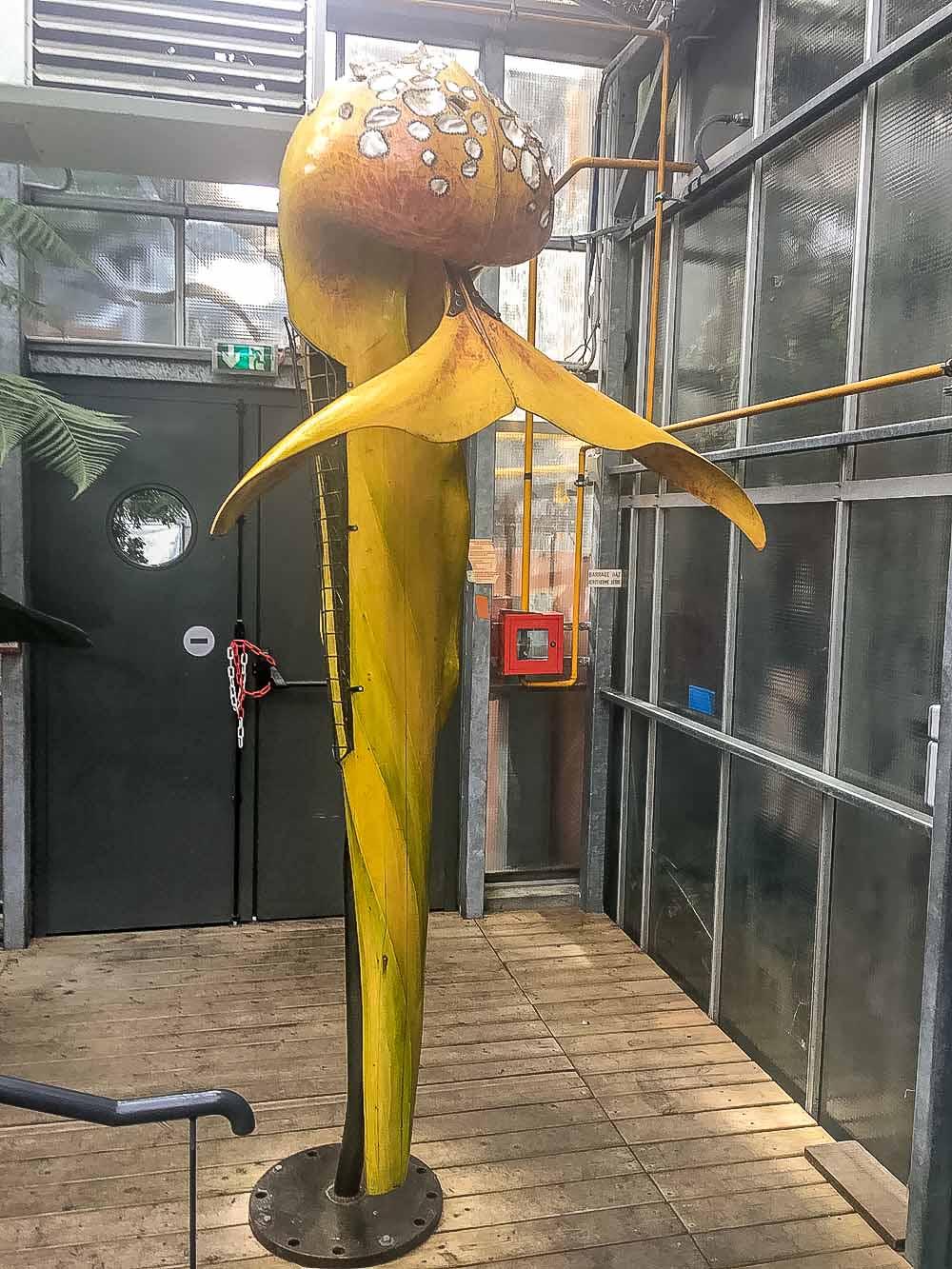
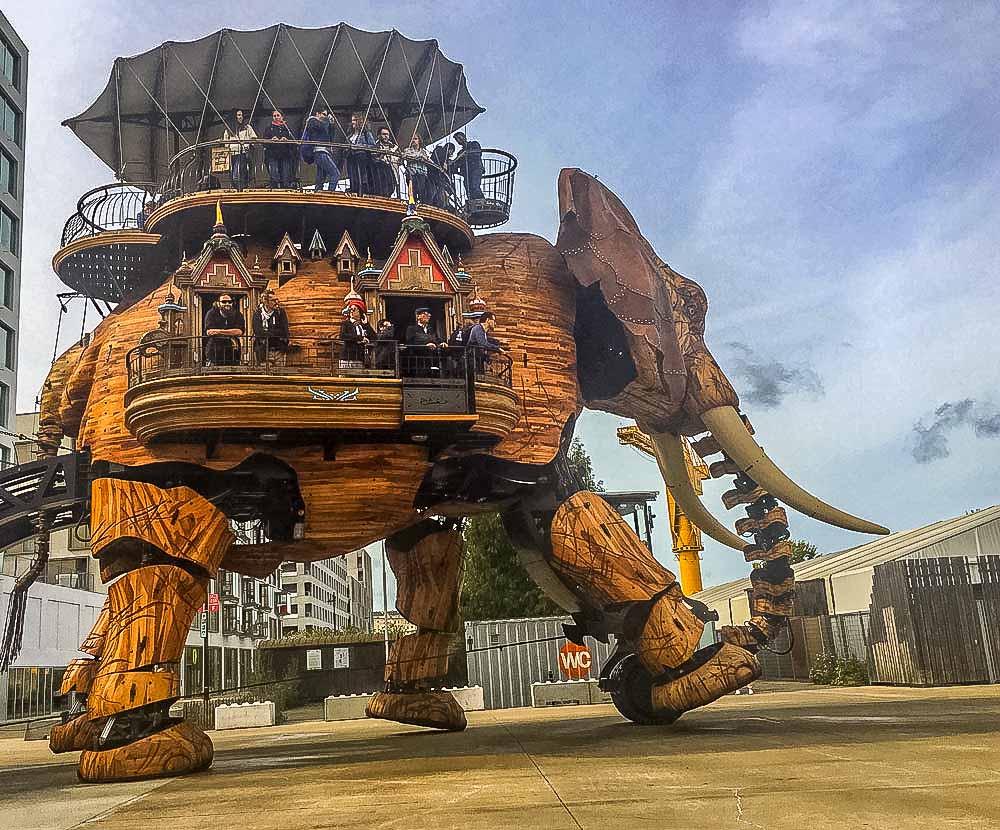
Carrousel des Mondes Marins (Carousel of the Marine Worlds)
Among the most fascinating merry-go-rounds, you’ll ever see is the Carrousel des Mondes Marins, which features three levels representing the ocean floor, water, and surface. This piece’s intricate design and architecture, which stands 25 meters tall, are well worth the ride on sea creatures, such as manta rays, squids, and giant crabs. It stands 25 metres in height and 72 metres in diameter.
Nantes Cathedral, also known as the Cathedral of St Peter or St Paul of Nantes.
Over 450 years were spent on constructing this Romanesque cathedral from the 1400s!
Puy du Fou
Another place you may be interested in visiting is Puy du Fou.
Puy du Fou is located in Les Epesses in the Vendee region of France, just over an hour by car from Nantes. It’s a historical theme park (no rides). It feels like you are in the middle of various film sets and experiencing history as a bystander. The special effects are spectacular. It’s an excellent day (or two) out for the whole family. Read more here…
Le Jardin Des Plantes
Nantes has some beautiful parks and gardens around the city. Le Jardin Des Plantes, or the Garden of Plants, was one of the places we visited. It’s a short walk from the train station and the castle of the Dukes of Brittany. Seven hectares of greenery in the city centre. And one of the top botanical gardens in France. There are hundreds of plants here, some outdoors and others in greenhouses. In addition, you will find sculptures like that of the servants and others cast into trees and shrubs. There are lovely water features, interesting paths, and a play park. In addition, there are picnic tables with parasols and a toilet block. It’s free to enter and well worth a visit.
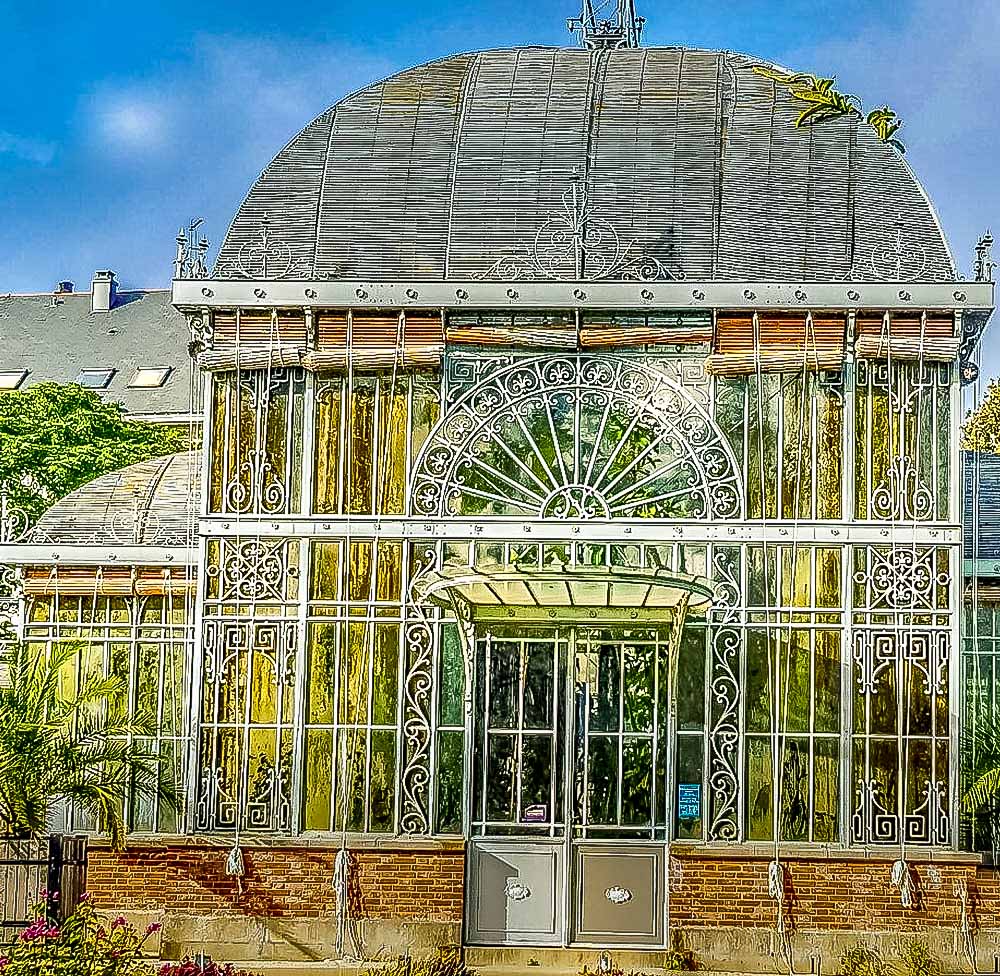
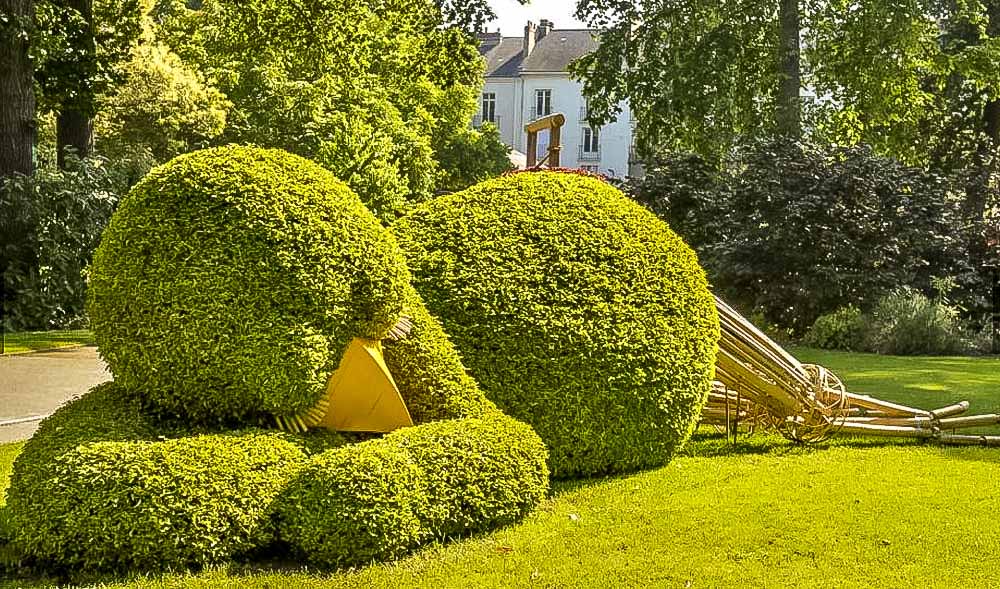
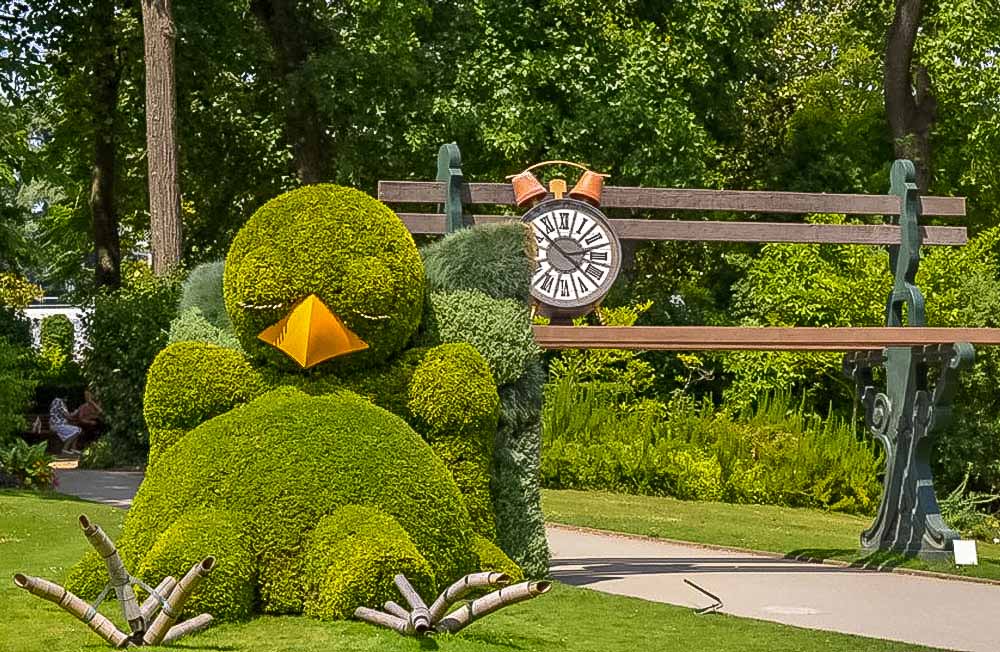
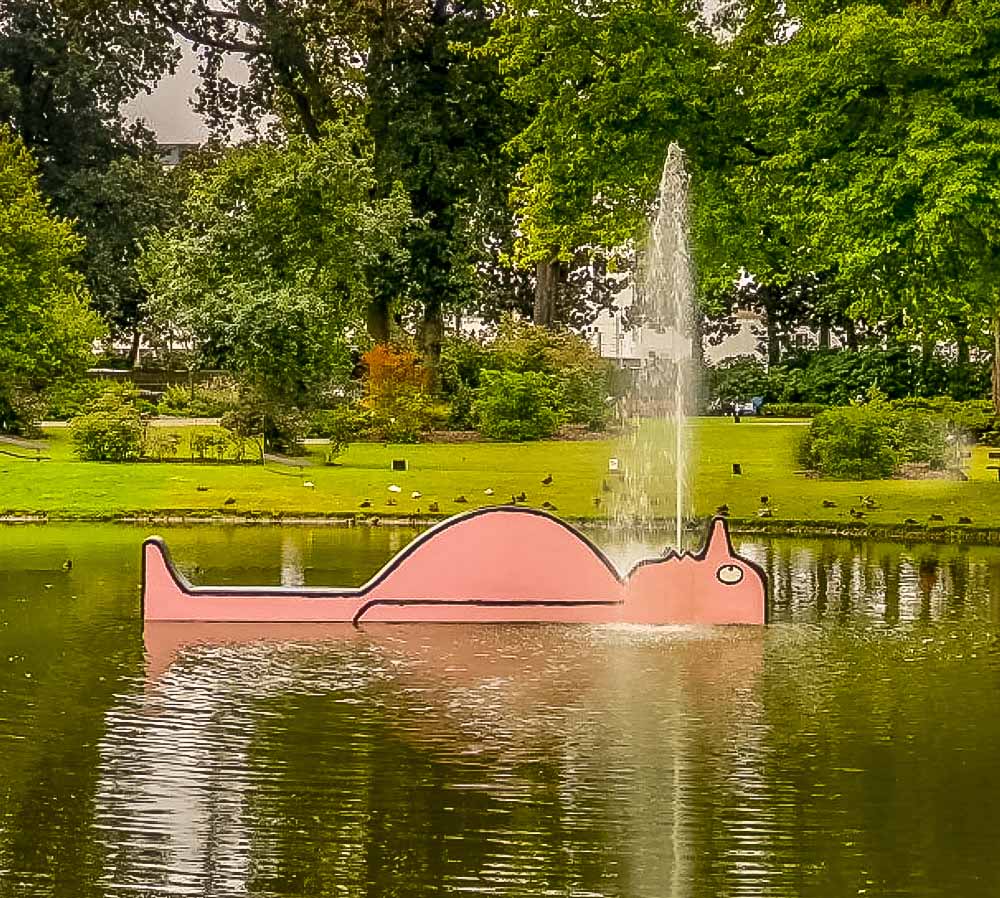
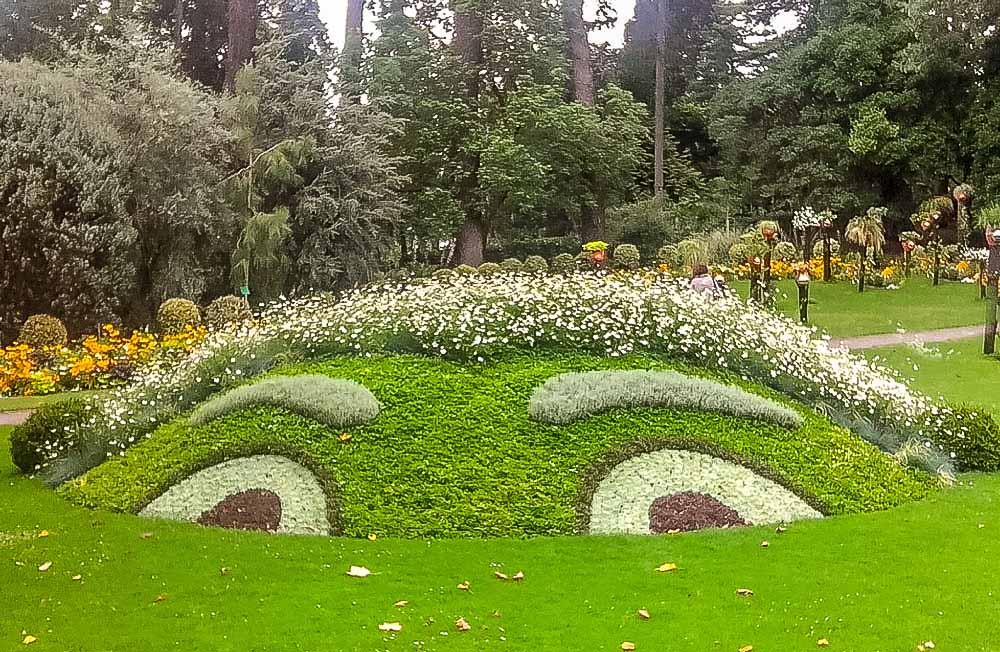
Trentemoult
One place we ran out of time to see, but I have read is worth a visit is Trentemoult. You can take the Navibus across the Loire and stroll around this former fishing village’s coloured houses and narrow streets. Until the nineteenth century, Trentemoult was a quiet fishing village. It’s now one of Nantes’s most colourful areas and a hub for artistic activity. There are many colourful streets lined with flowers and murals where you can stroll through the amazing maze of streets. A meal at La Civelle while gazing at the river was recommended to us as a good lunch stop.
A 19th-century oasis lies west of Nante’s oldest quarter. Wide boulevards and grand buildings replace rambling narrow streets. This is where the city’s larger shops and commercial heart can be found. There are plenty of pavement cafes and squares to relax in.
General Info
The Muscadet wine is a Nantes speciality, and every cafe and restaurant in the city sells it.
The city is quite rainy (800mm a year – more than London) but mild.
The Green Line
Throughout the year, you can follow a green line painted on the ground around the city’s heart: cultural stages, monuments, works of art, and unique elements.
Most steps on the trail are free, whether they are “must-sees” of the destination or little-known treasures. Click the link “A Journey through Nantes” below to get the official green line itinerary. https://www.levoyageanantes.fr/…/walk-the-green-line/
